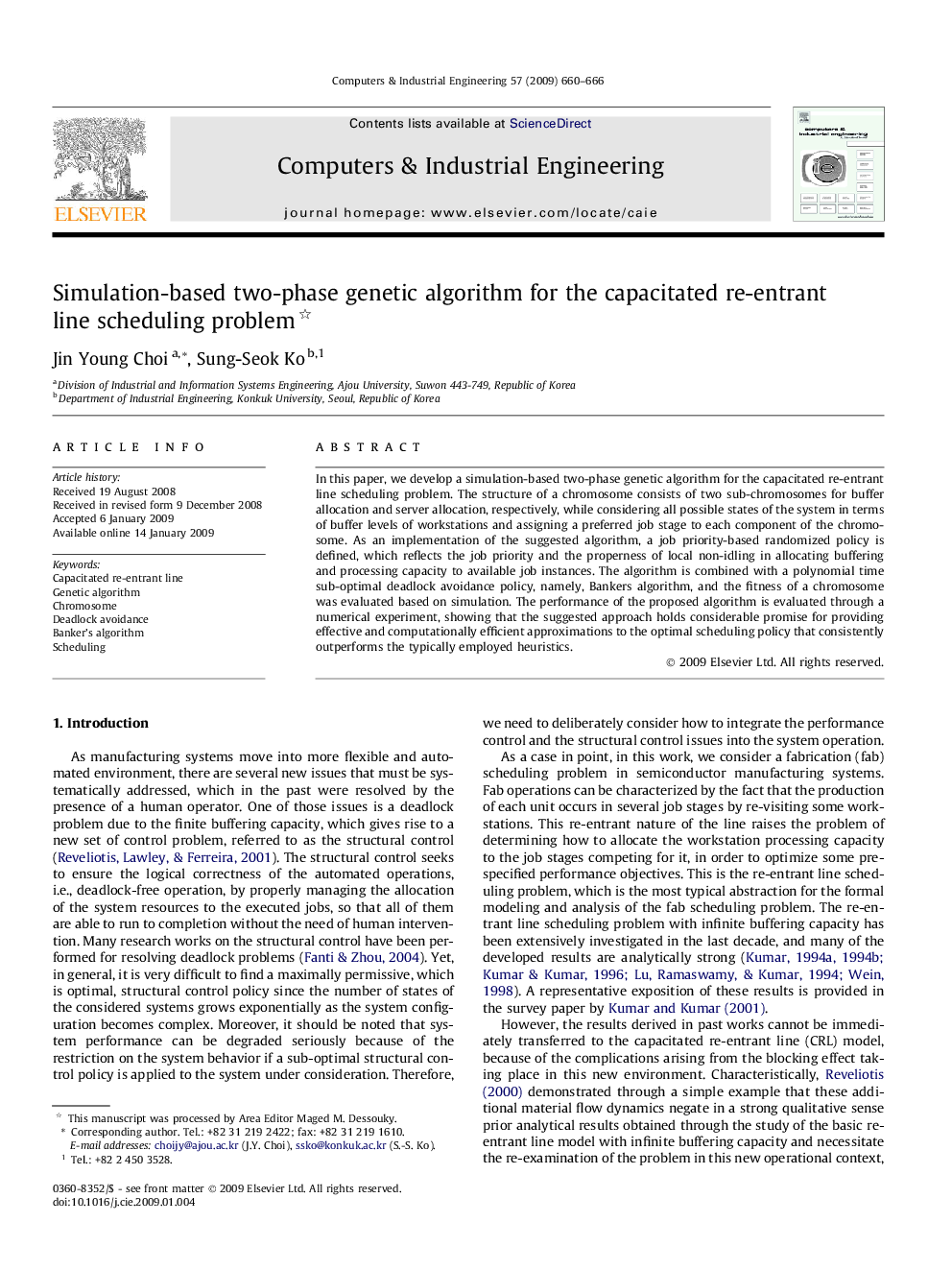| Article ID | Journal | Published Year | Pages | File Type |
|---|---|---|---|---|
| 1135162 | Computers & Industrial Engineering | 2009 | 7 Pages |
Abstract
In this paper, we develop a simulation-based two-phase genetic algorithm for the capacitated re-entrant line scheduling problem. The structure of a chromosome consists of two sub-chromosomes for buffer allocation and server allocation, respectively, while considering all possible states of the system in terms of buffer levels of workstations and assigning a preferred job stage to each component of the chromosome. As an implementation of the suggested algorithm, a job priority-based randomized policy is defined, which reflects the job priority and the properness of local non-idling in allocating buffering and processing capacity to available job instances. The algorithm is combined with a polynomial time sub-optimal deadlock avoidance policy, namely, Bankers algorithm, and the fitness of a chromosome was evaluated based on simulation. The performance of the proposed algorithm is evaluated through a numerical experiment, showing that the suggested approach holds considerable promise for providing effective and computationally efficient approximations to the optimal scheduling policy that consistently outperforms the typically employed heuristics.
Related Topics
Physical Sciences and Engineering
Engineering
Industrial and Manufacturing Engineering
Authors
Jin Young Choi, Sung-Seok Ko,
